Establishing the robustness of chip trade networks by dynamically considering topology and risk cascading propagation
- PMID: 39237532
- PMCID: PMC11377747
- DOI: 10.1038/s41598-024-71345-y
Establishing the robustness of chip trade networks by dynamically considering topology and risk cascading propagation
Erratum in
-
Author Correction: Establishing the robustness of chip trade networks by dynamically considering topology and risk cascading propagation.Sci Rep. 2024 Oct 15;14(1):24186. doi: 10.1038/s41598-024-75856-6. Sci Rep. 2024. PMID: 39406815 Free PMC article. No abstract available.
Abstract
Risk cascading propagation research mostly focuses on complex theoretical networks. Recently, the vulnerability of international chip supply has increased notably, and it is strategically important to explore how shortage risk affects the emergence dynamics of the real chip trade systems. This study abstracts the global chip trade relationship data for 2009-2021 into multiple asymmetrically weighted networks. Using macro-network and micro-node indicators, we explore the topological traits of international chip trade networks and their evolutionary laws. Accordingly, we propose risk cascading propagation models driven by node failure and edge restraint and further innovate to open up the research paradigm of focused-edge networks. Furthermore, a community infection-driven risk cascading propagation mechanism that incorporates community risk absorption capacity is introduced, considering both the propagation attenuation effects and the trade dependency degree. A multi-dimensional dynamic perspective reveals the hidden systemic risks in international chip trade. The main results are as follows: first, international chip trade networks are highly connected and cohesive, consistent with small-world characteristics. Second, the proportion of economies that collapse because of supply shortage risk shocks increases with the impact coefficient . The dominant power in chip crisis propagation has shifted from Europe and America to Asia, and mainland China's risk penetration capacity has enhanced significantly. Third, focused-edge networks conform to a multi-hub radiation pattern. Before the COVID-19 pandemic, the degree of control and spillover effects of chip supply shortages in hub economies on the international trade was increasing progressively. Fourth, an increase in absorption capacity or attenuation factor consistently leads to a decline in avalanche scale, with exhibiting critical thresholds. These findings will help policymakers pursue efficient management strategies for chip trade, thereby improving supply stability and security.
© 2024. The Author(s).
Conflict of interest statement
The authors declare no competing interests.
Figures
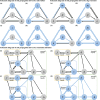


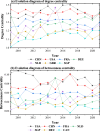
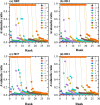
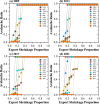

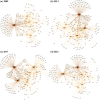


Similar articles
-
Analysis of the global trade network of the chip industry chain: Does the U.S.-China tech war matter?Heliyon. 2023 Jun 9;9(6):e17092. doi: 10.1016/j.heliyon.2023.e17092. eCollection 2023 Jun. Heliyon. 2023. PMID: 37484288 Free PMC article.
-
Author Correction: Establishing the robustness of chip trade networks by dynamically considering topology and risk cascading propagation.Sci Rep. 2024 Oct 15;14(1):24186. doi: 10.1038/s41598-024-75856-6. Sci Rep. 2024. PMID: 39406815 Free PMC article. No abstract available.
-
The potential for cascading failures in the international trade network.PLoS One. 2024 Mar 1;19(3):e0299833. doi: 10.1371/journal.pone.0299833. eCollection 2024. PLoS One. 2024. PMID: 38427673 Free PMC article.
-
Risk Transmission and Resilience of China's Corn Import Trade Network.Foods. 2025 Apr 18;14(8):1401. doi: 10.3390/foods14081401. Foods. 2025. PMID: 40282802 Free PMC article.
-
Microstructural Characteristics of the Weighted and Directed International Crop Trade Networks.Entropy (Basel). 2021 Sep 26;23(10):1250. doi: 10.3390/e23101250. Entropy (Basel). 2021. PMID: 34681975 Free PMC article.
References
-
- Khan, S. M., Mann, A. & Peterson, D. The semiconductor supply chain: Assessing national competitiveness. Center for Security and Emerging Technology 8 (2021).
-
- Un comtrade database (2021). [Online; accessed 14-March-2022].
-
- Hosoe, N. Impact of tighter controls on Japanese chemical exports to Korea. Econ. Model.94, 631–648 (2021).
-
- Cha, V. D. Collective resilience: Deterring china’s weaponization of economic interdependence. Int. Secur.48, 91–124 (2023).
Grants and funding
LinkOut - more resources
Full Text Sources

